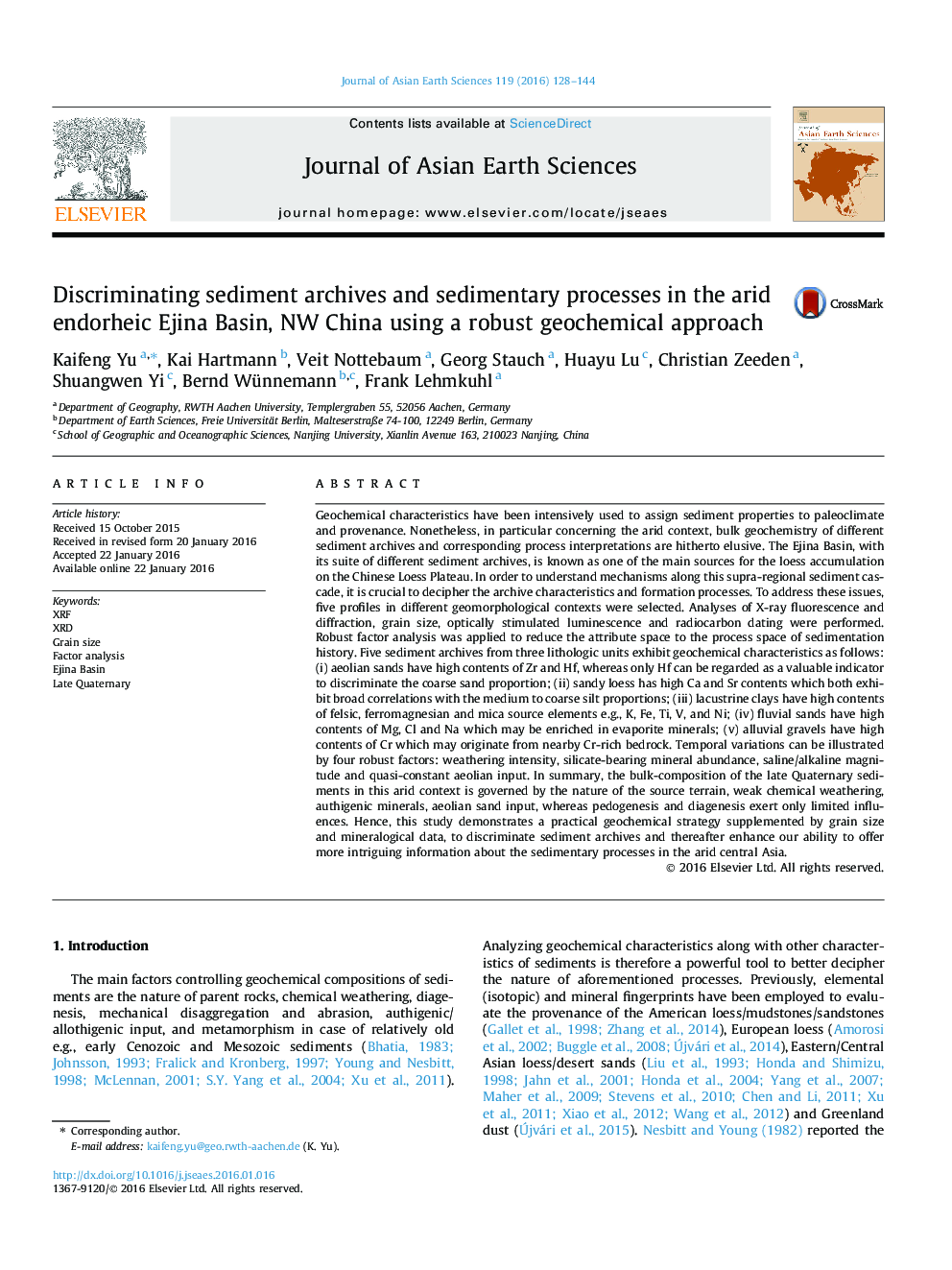| کد مقاله | کد نشریه | سال انتشار | مقاله انگلیسی | نسخه تمام متن |
|---|---|---|---|---|
| 4730105 | 1640352 | 2016 | 17 صفحه PDF | دانلود رایگان |

• Late Quaternary stratigraphy of the northern endorheic Ejina Basin.
• The correlation between bulk-geochemistry and granulometric compositions.
• A geochemical tool to discriminate sediment archives in the arid realm.
• The bulk-composition is governed by terrain, weak weathering, authigenic and sand input.
Geochemical characteristics have been intensively used to assign sediment properties to paleoclimate and provenance. Nonetheless, in particular concerning the arid context, bulk geochemistry of different sediment archives and corresponding process interpretations are hitherto elusive. The Ejina Basin, with its suite of different sediment archives, is known as one of the main sources for the loess accumulation on the Chinese Loess Plateau. In order to understand mechanisms along this supra-regional sediment cascade, it is crucial to decipher the archive characteristics and formation processes. To address these issues, five profiles in different geomorphological contexts were selected. Analyses of X-ray fluorescence and diffraction, grain size, optically stimulated luminescence and radiocarbon dating were performed. Robust factor analysis was applied to reduce the attribute space to the process space of sedimentation history. Five sediment archives from three lithologic units exhibit geochemical characteristics as follows: (i) aeolian sands have high contents of Zr and Hf, whereas only Hf can be regarded as a valuable indicator to discriminate the coarse sand proportion; (ii) sandy loess has high Ca and Sr contents which both exhibit broad correlations with the medium to coarse silt proportions; (iii) lacustrine clays have high contents of felsic, ferromagnesian and mica source elements e.g., K, Fe, Ti, V, and Ni; (iv) fluvial sands have high contents of Mg, Cl and Na which may be enriched in evaporite minerals; (v) alluvial gravels have high contents of Cr which may originate from nearby Cr-rich bedrock. Temporal variations can be illustrated by four robust factors: weathering intensity, silicate-bearing mineral abundance, saline/alkaline magnitude and quasi-constant aeolian input. In summary, the bulk-composition of the late Quaternary sediments in this arid context is governed by the nature of the source terrain, weak chemical weathering, authigenic minerals, aeolian sand input, whereas pedogenesis and diagenesis exert only limited influences. Hence, this study demonstrates a practical geochemical strategy supplemented by grain size and mineralogical data, to discriminate sediment archives and thereafter enhance our ability to offer more intriguing information about the sedimentary processes in the arid central Asia.
Figure optionsDownload as PowerPoint slide
Journal: Journal of Asian Earth Sciences - Volume 119, 1 April 2016, Pages 128–144